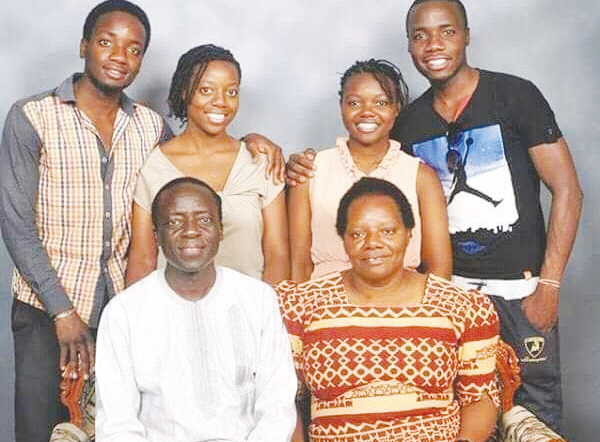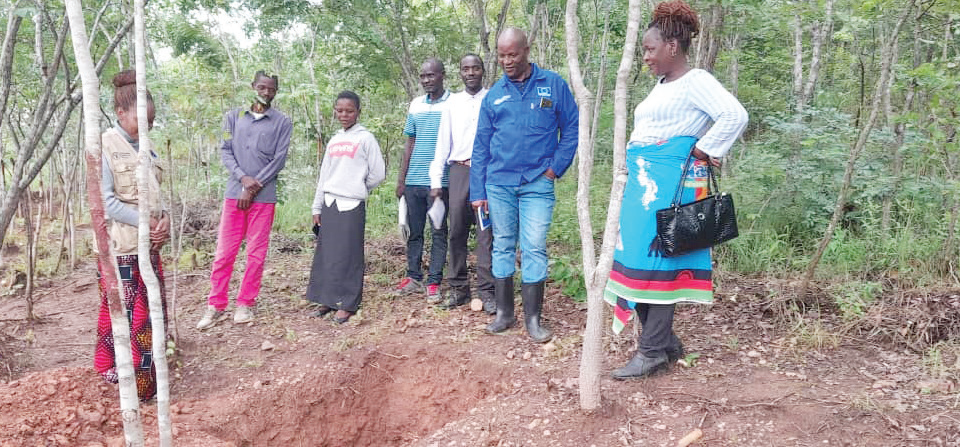The plight of Dzalanyama Forest
 The once vibrant Dzalanyama Forest Reserve in Lilongwe is today down on its knees, a pitiable picture that shocked Emmanuel Muwamba when he visited the protected area recently. What has gone wrong?
The once vibrant Dzalanyama Forest Reserve in Lilongwe is today down on its knees, a pitiable picture that shocked Emmanuel Muwamba when he visited the protected area recently. What has gone wrong?
Struggling to keep steady as he pushes a bicycle laden with wood about two times his height on an earth road in a rain drizzle, Nedson Kamchedzera joins a stream of other operators.
The 45-year-old and hundreds of other operators trek to Lilongwe to supply the city with the much needed fuel wood.
They chop the wood illegally from Dzalanyama Forest Reserve, which is also considered the water tower of the city.
But Kamchedzera, who started the business about 20 years ago, and others are at the centre of an environmental battle that could define the fate of the water tower for about one million inhabitants.
He sells a stack of wood at K1 400 (about $8.38) to middlemen who then transport it to vendors in Lilongwe urban centres.
“This is my source of livelihood. I started the business when I was young. This could be my 20th year in the trade,†said Kamchedzera, looking tired.
Like many others, Kamchedzera starts his day at 5am and sneaks into the forest reserve where he chops wood before hitting the road at 2pm, a routine he described as tough.
He makes the errands five times in a week and dedicates the remaining days to farming to produce maize and other crops to supplement what he earns from the wood business.
All things being equal, Kamchedzera makes K28 000 (about $167) in a month at the expense of government which is failing to monitor the illegal logging, charcoal burning and collection of fire wood.
Lilongwe district forestry officer, Jipate Munyenyembe, acknowledged that there are illegal activities in the forest reserve.
Munyenyembe pointed the accusing finger at people from Beni Village in Traditional Authority Masula who live on the edge of the forest, warning that the trend is a growing threat to water supply in the city and surrounding areas.
He said investigations conducted by his office established that about 400 bicycle operators ferry the wood everyday from Dzalanyama Forest Reserve.
From the figure provided by Munyenyembe, it is safe to conclude that government is losing about K11 million (about $65 868) a month and K134 million (about $802 395) a year from the forestry resources by fuel wood gatherers alone.
That figure excludes charcoal.
Former Minister of Natural Resources, Energy and Environment Grain Malunga last year warned that taps in Lilongwe could dry up if charcoal burners continued felling trees in Dyalanyama.
“This could lead to rivers drying up and the holding capacity of the dams being reduced,†said Malunga.
He said the rate of deforestation is very high and that within five years, the water holding capacity for the dams in Lilongwe would be reduced by sand.
His assertion that charcoal burners are destroying the forest is supported by Pilato Elefanti who talked to Nation on Sunday as he took a breather after pushing his heavy load.
“There are several charcoal burners in the forest who camp there for days,†said Elefanti, another fuel wood seller, while dragging his bicycle to the market.
Some charcoal traders who were captured pushing laden bicycles with bags of charcoal said they sell at K1 500 to middlemen who, in turn, sell to other operators in Lilongwe at a higher price.
Elefanti said about 300 people ferry two sacks of loaded charcoal into the city everyday but they mostly use unchartered routes to avoid forestry officials who usually confiscate the commodity whenever there is no evidence of permits.
Munyenyembe said it is difficult to monitor the operators.
“They bypass the designated entry points and camp in the forest for several days doing all sorts of illegal activities there.
“We don’t have the capacity to monitor their movements. The district is heavily understaffed,†he said, disclosing that out of the required 58 extension workers, he only has eight.
To save the forest from further exploitation, in October last year the district forestry office involved the Malawi Defence Force and Malawi Police Service in a three-day operation which ended up confiscating hundreds of bags of charcoal.
Malawi loses nearly 520 square kilometers of forest annually, a deforestation rate of 2.8 percent that SADC says is one of the highest in sub-Saharan Africa.
A 2011 Economic Analysis of Unsustainable Use of Natural Resources in Malawi suggests that the country is losing about $191 million, an equivalent of giving up 5.3 percent of GDP.
“But it is difficult to quantify to what extent the forest reserve has been exploited. We need aerial surveys to do that,†said Munyenyembe.
He is worried that the continued destruction of Dzalanyama will have long-term implications for residents of Lilongwe and surrounding districts who depend on the forest in various ways.
“The cutting down of trees is increasing sedimentation in rivers around Lilongwe which is causing a drop in water levels in these rivers.
 “We may have problems [in future]. Water boards may end up using a lot of chemicals and the cost will eventually be passed on to consumers,†said Munyenyembe.
He fears the worst with the impact of climate change which is taking its toll on crop production in the area.
Recently, the country experienced dry spells, a situation that has affected the production of crops, thereby piling more worries on farmers.
The dry spells did not spare people living on the edge of Dyalanyama Forest Reserve, a new phenomenon for most people in the area.
Climate change scientists associate irregular rainfall patterns with climate change and have identified depletion of forests as one of the causes of the problem. They say deforestation disturbs the hydrological cycle, a rain formation process.
Village headman Beni said in recent times his area has been experiencing unreliable rainfall.
Beni noted that while climate change may be a major contributor to the dry spell, which has caused a food crisis in his area, the destruction of the forest has reduced the ability of the Dzalanyama ecosystem to absorb or reduce the impact of climate change, increasing the vulnerability of the people to global warming.
“In those days, our crops were maturing around this period (February) but that is not the case now.
“As you can see, the maize crop in the fields is still tender. And some farmers are still planting their crop. All this is because the rains did not start at the right time and they are not reliable,†he said.
Beni is not optimistic that the problem of depleting the forest would end any time soon, citing widespread poverty in the area.
He said the poverty is what is driving the locals into charcoal burning.
Meanwhile, Munyenyembe said his office intends to plant 11 million trees across the district this rainy season in an effort to avert the adverse effects of climate change.
Most of the trees will be planted around Dzalanyama Forest Range.
He said up to 2 000 trees supplied by the Irrigation for Rural Livelihood and Development (IRLAD) have already been planted in the area of village headman Beni.
“Another 118 500 trees supplied under the Local Development Fund (LDF), 102 000 under the Rural Infrastructure Development Programme (RIDP) and 250 000 under the Presidential Initiative have also been planted,†he said.
Deforestation is running at 3.49 percent (approximately 100 000 hectares each year) in the country.
The problem is that these protected areas are being hammered to meet the energy needs of the 88 percent of Malawians that rely, for cooking and heating, on fuel wood and charcoal production.
Charcoal production is the country’s third largest industry in economic terms, employing 133 000 people.
In an effort to address the deforestation, this year about 60 million trees are expected to be planted in the country during the forestry season.
ÂÂ





